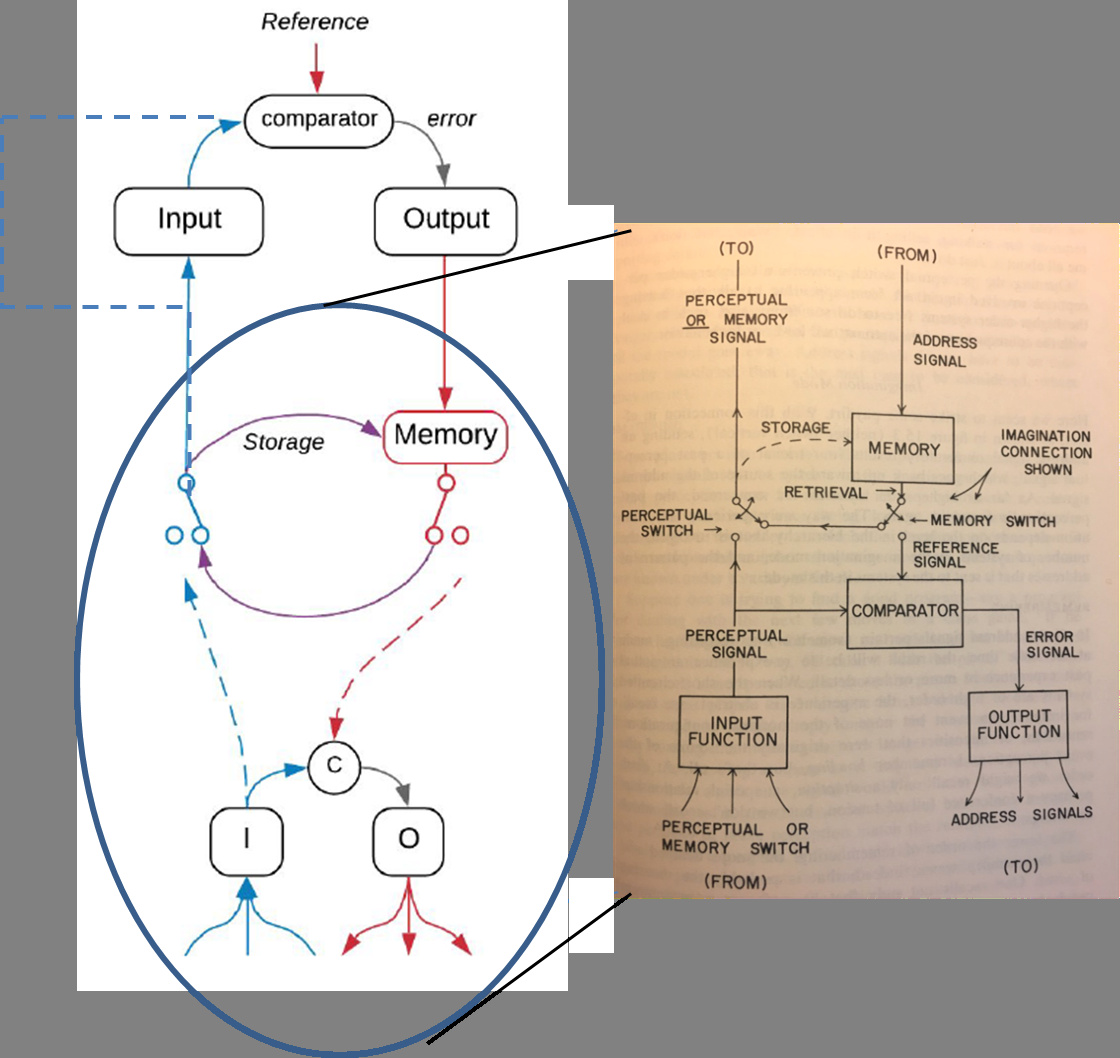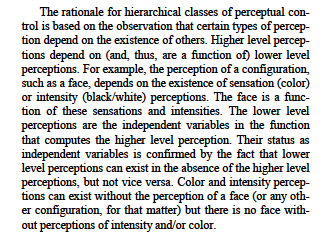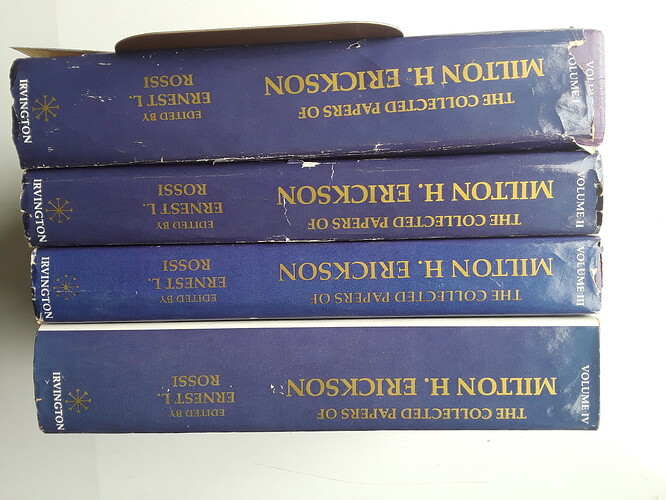[Bruce Nevin 20190524.0610 ET]
Eva de Hullu 2019-05-24_07:54:40 UTC –
I tried to draw Bruce’s idea:
[Bruce Nevin 20190523.0852 ET] The “Memory” box is not part of the same control system. It is part of a system or systems at the level below it.
But I can’t visualize how this would look, other that just the normal control system. What would the difference be between memory and ‘normal’ input?
Bill’s proposal in B:CP for the ‘Control Mode’ position of the two switches is that error output at the higher level evokes memory of the given perception by specifying the amount of each of the tributary lower-level perception(s), where the lower-level perceptions themselves are stored in memory.
The error signal from a given higher-level system typically or perhaps always branches so as to specify the amount of each of the many lower-level systems which contribute perceptual input to that higher-level perceptual input function. A single rate of firing is diversified into the several rates of firing appropriate to get the right amount of each tributary perception. (See “amplification” in B:CP.)
So I am oversimplifying to say that the “Memory” box in the diagram is part of the lower-level systems. According to Bill’s verbal formulation in B:CP, that box in the diagram represents a copy of the input perception which has been stored in memory at the same level. However, what is memory? It is not off in a box someplace. It is stored electrochemically at every synapse. (A source of confusion: people sometimes talk imprecisely about memory functions in the brain. There are functions in the brain that are instrumental in storing and reinforcing memory, apparently by feedback to the synapses where the memory is actually stored.)
The “Memory” box has an arrow entering it from the error output of the comparator above it. The particular perception controlled by that comparator comprises in its perceptual input function a set of perceptual inputs which contribute to it from below. The fact that it is memory of that particular perception arises from and is identical with its connections in the hierarchy. It arises from the fact that certain higher-level systems call for that perception as part of the perceptions that they control. It arises from the fact that this particular higher-level system has both its perceptual input function and its branching error output signal connected precisely to each and all of those particular lower-level systems. (At the lowest level, sensors providing input and effectors receiving error output are distinct kinds of organs, but precisely there the loop is closed through the environment rather than through lower-level comparators.) The branching of error output to just those systems which contribute perceptual input could properly be called the error-output function of the higher-level comparator; and that is what the “Memory” box represents: the error-output function which distributes just the appropriate rate of firing to the reference input functions of the connected lower-level systems.
The oversimplification is in our diagram which represents a single arrow entering a box labeled “Memory” and a single arrow exiting (via a “switch”) either to a reference input below or to the imagination shunt over to the perceptual input.
I have proposed here and in print that every system is always imagining its input; that is, that every comparator is always receiving a signal through its reference input. Absent control from above and perceptual input from the environment, this is a low rate of firing. Not much of that perception is requested, and the difference between the reference and current perceptual input generates weak reference signals for the tributary lower-level systems. A higher-level system calls for that perception by way of a stronger error signal generating a stronger reference signal. Choosing to imagine an apple generates these stronger reference signals down the hierarchy, but absent input from the environment to sensors the lowest level or levels have only a pallid activation.
If this were not the case, then the natural state of mind when sitting quietly in a static environment would be vegetative. Anyone who has meditated knows that this is not the case. FMRI scans also show apparently random activity, what one neurologist told me was the brain talking to itself. (What was surprising to him – I had the impression that it was unprecedented in his experience–was that my wife’s brain was completely quiet when, minutes later, she put herself into a trance state to channel. But that’s another story, probably over the event horizon for some folks here, and should not distract from present purposes.)
This is consistent with brain activity during sleep. As we approach a waking state, the narrative-making functions in the brain fashion this into what we recall as dreams.
It is consistent with the phenomenon of perceiving aspects of the environment that are not presently perceptible, as though they were present. This ranges from recognizing the cat by glimpsing its tail twitching under a bush through constructed illusions to the phenomena of confirmation bias.
Martin, I’m really swamped right now. Do you think it would be useful to dredge up some of the discussion that we had about this a year or two ago?
···
From my first reading of B:CP the mechanistic character of the switches in Bill’s diagram has been unconvincing to me. As I have learned more, I understand that neural connections are not at all static, and that neurons make and break synaptic connections all the time. But the purposeful changing of connections when something calls for imagining a given perceptual input, at one or many levels depending upon the vividness of the imagining, is not explained. The way in which some current perception ‘triggers’ a memory, which is in fact an imagined perception, is obviously related.
/Bruce




